※ The gemstones stated below are exhibited as gemstones and gems by type at the Impression Hall of Permanent Exhibition.
- Diamond : Nobility
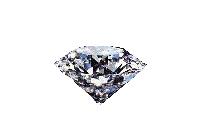
- Diamonds are formed in volcanic eruptions and are scattered by volcanic eruptions. They are found in rocks or crevices of mountains and very rarely near rivers. They are the most distributed in Central Africa and Russia.
It has the highest values as it usually requires the excruciating digging-out of 250 tons of gravel and rocks to produce 1 carat of diamond.
Diamonds are said to be ice turning into a stone. It has been said that a mother who was dying of thirst in the desert drank honey with diamonds and was immediately able to breastfeed and save her dying child. Therefore, it was considered a guardian stone for women.
Diamonds also symbolize the pinnacle of victory and success. It was considered indispensable for the king's head and was mainly used as the center stone for crowns. People believed it symbolized good fortune that brought wealth and happiness. It is this belief we use diamonds in marriage rings today.
- Emerald : Happiness
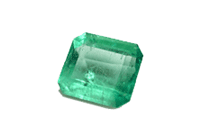
- The origin of the word emerald is ancient Persian, where the Latin word smaradus was changed to esmeraude, emeraude, and emeralde, eventually changing to emerald. Its beautiful green color has fascinated people throughout the ages. The beautiful green jewel represents the season of greenery, and spring, symbolizing beauty and the future.
It is no wonder that its green color has been loved by many as a jewel that can make the heart of its viewers generous. It has also been thought that the emerald is a jewel dedicated to the goddess of beauty, Venus, for its power to show the integrity of loved ones. It has been known to be the stone of integrity, kindness, and goodwill.
The emerald owner was believed to be able to predict the future. The stone was believed to sharpen wit, give wealth and power, strengthen memory, make orators speak well, and reveal the truth and lies of lovers.
- Ruby : Courage, Justice
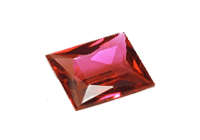
- Ruby comes from the Latin word ruber, which means red.
The ruby is the noblest of the twelve jewels God created when creating all things. The King of Jewel was worn around the neck of Moses' brother, Aaron, by divine command. It is the fourth of the stones that adorned the heart of Aaron, the high priest. Its name is inscribed on the stone as a jewel representing the Jewish race.
The blazing red has been used as the color to express human passion and sincerity both in the East and West in the past and present. Even if in a small amount, red can be felt more intensely and clearly than any other color, even from a great distance.
Ruby symbolizes passion with its red color. It has also been believed that rubies could eliminate evil minds so that the owner can keep a healthy body and mind, succeed with health and wisdom, and defeat fears in the mind. In the Middle Ages, it was believed that the ruby had the power to reconcile fights so that its owner could have a harmonious and peaceful life. Rubies were also believed to protect one's property and let them escape from all dangers and difficulties.
- Sapphire : Truth, Invariability
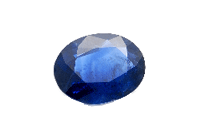
- The word sapphire comes from the Latin sapphirus, which means blue. It is said to be the jewel of autumn and soul, bringing luck to the owner. It is indeed a jewel befitting the high autumn sky, the season of fruition.
Sapphires have long been considered a symbol of truth and immutability.
In Christianity, it is a symbol of St. Paul; in medieval Europe, it was used as a ring for the clergy.
The rings worn during the coronation of a monarch were made of gold with sapphires, which seems to have begun in the 7th century. When Pope Sixtus IV died, he was buried with an expensive 300-carat sapphire, and it has been recorded that it was watched to prevent theft.
In the Middle Ages, sapphires were called king's stones, were considered precious, and decorated the crown many times. The stone of Rosecut, which was used as a ring by King Edward of England in the 11th century, was subsequently studded in the crown of England. The ancients thought that sapphires affected the whole body, protected it from impurity, created peace among enemies, and spared them from captivity.
- Agate : Luck
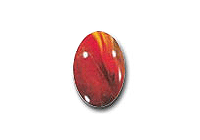
- Agate has been a favorite jewel in the East and West since ancient times, and ancient ornaments made of it have been found all over the world. Its name is said to have originated from the resemblance of a horse brain when it is excavated.
The varieties are divided into two, Calcedoni, which is relatively even in color, and agate, which has stripes
Its etymology is uncertain, it might come from Chalcedon, a port near Byzantine. It might be the earliest source origin. It is Chalcedon in Greek and Chalcedonius in Latin.
Calcedoni was thought to be a talisman with strong power. Greek sailors wore amulets made of Calcedoni around their necks to avoid drowning in the 3rd and 4th centuries. In the 18th century, Calcedoni was thought to protect one from ghosts at night.
Agate has been known to be the stone of fortune for centuries. It was believed that its wearer attracted God's favor, and insomnia patients wore it to prevent lying awake. Some wore it to be strong and bold and avoid terrible storms and danger. Legend has it that carrying it can convince people.
- Amber
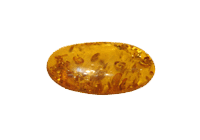
- The etymology of amber comes from the Greek word for electron because a spark can be generated with friction. Amber is derived from An-var and means Amber-Greece, a wax substitute used to make perfumes in ancient times.
The ancient Germans called amber Bernstein, which means “burning stone”.
Amber is one of the best decorative gems used by mankind. In the West, artifacts have already been found in Egypt and Switzerland that were carved and used in various ways by cavemen. In the East, it has been cherished as one of the seven gems since ancient times, and Koreans have favored it as an ancient ornament, like China.
Amber was one of the first gemstones used as an amulet, and amber carved in animal shape was the most powerful, so people wore them to avoid witches. Romans and Germans used amber powder as a fragrance. From ancient records and amber storage methods, we can find out that people have been worshipping amber for a long time. Processed amber products were placed in tombs to wish the deceased a happy afterlife.
- Quartz
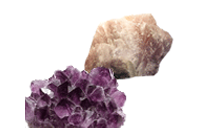
- Quartz is divided into crystals and amethysts.
The etymology of crystal is crustalos, which means ice. It was first discovered by ancient Greeks deep in Mount Olympus and they believed that gods made it to preserve water forever.
Amethyst comes from amersistas in Latin and amersitus in Greek. In ancient Greece, it was said to be derived from the meaning of not being drunk or that it had the power not to let one get drunk or remain sober.
Purple has been regarded as a sacred color in the East and West. Purple amethyst has become a favorite gem for modern people, as the ancient people's preference for purple seems to have become a subconscious bias even today.
- Cameo
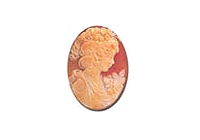
- Cameo originally referred to a sculpture technique of stone carving (relief) that was a technique used by ancient Greeks for ornamental pieces.
Everyone wants to leave behind something to prove they have lived or want to receive.
Ancients’ such desires have been found in various ruins.
In ancient primitive societies, beautiful colored stones were believed to have mysterious powers, so people worshiped, guarded, and cherished them. Thereafter, a simple sculpture began to be added, and technology also advanced over time so that colored stones came to have value as an ornament rather than an object of worship.
The kings of tribal states in ancient Egypt used cameo as a stamp to prevent documents and valuables being shipped from being lost, confused, or altered. In modern cameos were valued as a symbol of male power.
- Lapislazuli
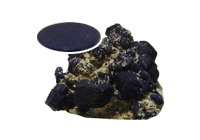
- The word lazuward originated from the Arabic word, lazuli, which means blue. In Latin. lapis means stone.
In the East, it has been called glass and it also appeared in the Lotus Sutra and Amita Sutra as one of the Seven Treasures. In ancient China, lapis was called a black-blue gold stone.
It was used to draw eyebrows and as a cosmetics product or for the tabernacle that was adorned with pearls.
Considered the perfect gift for a dancer, it was seen as a symbol of chastity that prevents evil maneuvers and ensures help from the angels. Legend has it that lapis was called the jewel of true friendship. People wore them to make friends or for hope. It was also used as a talisman to protect the wearer from injury. It was said to be particularly effective in protecting against damage. The ancient Greeks and Romans awarded it as a symbol of courage.
- Opal : Hope, Innocence
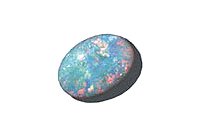
- Opal has long been known to be the jewel that symbolizes the happiness of women. The origin of its name come from opalus in Latin or opalios in Greek.
The Chinese name for opal is protein stone, which illustrates how it was created. The name meaning whiteness of eggs indicates a milky white stone. Ancient Romans called opal a cubit bideros (lovely beautiful child) and praised it as a symbol of beauty.
Opal consists of the essence of all jewels. It isn't easy to express in words, but the flame of ruby, the splendid purple and amethyst, and the blueness of an emerald are integrated, as Roman naturalist Prinius said. The Romans revered opal as a symbol of hope and purity and the love of God and believed that its bearer could be protected from all diseases. In the East, it has been highly praised as a sacred jewel with a sincere heart.
- Jade
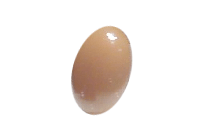
- The Origin of the word jade comes from the given name when the Spanish conquerors invaded and plundered Mexico.
The natives warmed the stones and used them to treat kidney disease by placing them on the flanks or the waist. They call the stone Piedra De Ijada, which means the stone of abdominal pain. It was first written about by Dr. Monardes, a physician in Seville, Spain, in 1569.
The word jade we usually use means red and green colors, derived from the color of the wings of a small bird called waterfowl.
Modern people love jade for its appearance and touch, and it has long been valued for its toughness.
Jade is synonymous with noble beauty and decency. The ancients often referred to a woman full of youth, with white and soft flesh, immaculate and radiant skin, and a fine heart to be as beautiful as jade. Also, a well-educated nobleman of character is said to be like jade.
- Turquoise : Success, Victory

- Turquoise is a refreshing gem, like the morning blue. Turquoise comes from a French word for stone or women of Turkey. It is easy to mistake the place of its production as Turkey, but it has never been produced in Turkey.
However, there are various theories for the name, the most likely that the stone, produced on the Sinai Peninsula, was brought to Europe via Turkey.
Merchants and travelers traveling the Silk Road carried this stone in their horses or camels. It was their talisman for their camel or horse in the desert or against the threats of Mother Nature. They also believed they would not be injured when falling from a camel or horse.
Turquoise symbolizes good fortune and success, and it was believed that its bearer would prosper and have greater luck when received as a gift rather than buying it for themselves. At the end of the 19th century, it was considered effective only when receiving it as a gift. Even today, Tibetans believe that turquoise protects them from infectious diseases and the eyes of the devil and brings happiness and health.
Its origin combines chrisso and beryl, which means gold in Greek. Indigenous Sri Lankans used the cat's eye to avoid curses. Assyrians believed that wearing it would make them invisible to their enemies. Cats' eye was once used to treat eye diseases. It was also used to treat depression, laryngitis, asthma, and other chronic diseases, help blood circulation, and prevent financial downfall. Anyone who memorizes the spells under the lights would get far more efficacy.
- Andalusite
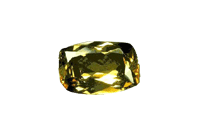
- The name andalusites comes from Andalusia, Spain, where it was first discovered.
Chiastolite is a word from the Greek letter X (chi). Another name, mackle, comes from the Latin word macula, which means home or dot.
As chiastolite contains the form of a cross, ancient people thought it had magical power. Many believed that this would cast the devil away.
Even today, people still buy it as a symbol of good fortune. It was believed that when a breastfeeding mother wears it, it helps milk production and if it was carried on the body, it would stop bleeding from a wound. Wearing it as earrings was believed to cure fever.
- Coral (Aquamarine) : Intelligence
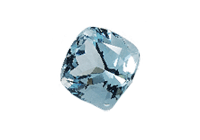
- Aqua from aquamarine, which means water, and marine means sea. The fresh, beautiful pale blue aquamarine symbolizes happiness and eternal youth.
People of the Middle Ages believed that its wearer could have insight and the ability to predict the future.
It was also believed to allow restful sleep, perhaps because the gem was believed to have the power to conquer evil. People had a strong belief in its powers as they believed that they could get the answer to questions when they asked them with an aquamarine in their mouth.
- Moonstone
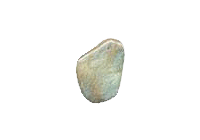
- Adularia, another variant of moonstone, originated from Mount Adula in the Swiss Alps.
Hindu myths, the gem is said to have been formed by the solidification of moonlight. In many parts of the world, it was believed that its wearer would have good luck. In India, where the jewel is still considered a sacred stone, it is only displayed on a yellow cloth, which is believed to be sacred.
According to Indian legend, moonstones were created under the moonlight. Therefore, you can see your future if you put a moonstone in your mouth during the full moon. People in the East believed that moonstones contained compassionate souls and wearing them would bring a good future, which is considered sacred.
Moonstones have long been considered the most suitable present among lovers. It inspires passion and allows lovers to predict the future and discover if they will be together for better or worse. Ancient people considered moonstones as a symbol of hope. The wearer was said to avoid psychosis and cool down an overheated imagination.
- Garnet : Truth, Friendship

- The etymology of garnet is the Latin word granatus, which means 'like a seed' or 'with many seeds'; garnet crystals were called ganatum in the past.
The North American Indians used the stone as a weapon, believing that garnet would find blood quickly and inflict a more deadly injury.
In the Christian tradition, garnet represents the sacrifice of Jesus, and in Islam, it represents the light of the 4th heaven.
The traveler who carries garnet thought that he could be protected from danger. Garnet was a jewel for friendship, loyalty, immutability, and truth. In the Middle Ages, all red jewels were called garnet. It was believed to prevent epidemics, ensure close friends, and raise power.
- Malachite
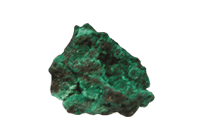
- The name comes from the Greek word, malaque, as it resembles the color of the plant maux leaves and is also related to the Greek word malacos, meaning the weakness of the gemstone.
Most of them are striped, and the various stripes and colored bands create the beauty of it.
A slender stripe of a dark, pale emerald green shape on the peacock stone creates a concentric circle or grape-shaped layers that look like a peacock's wings. That is why the gem was named the peacock stone.
Egyptians favored the peacock stone about 4,500 years ago. At that time, this jewel had a significant meaning as a talisman. It was believed that attaching this gem to a baby's cradle allowed the baby to sleep comfortably as it defeated all demons. From ancient times to the Middle Ages, parents attached a piece of malachite to baby cradles. Then children could sleep in peace and be safe from magic.
- Peridot
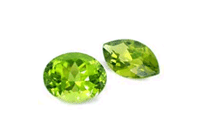
- Peridot is called the olive stone and the origin of the word olive stone comes from olive tree.
The evergreen olive tree grows in the Asian tropical mountains, and the color of trees and oils is similar to the yellow-green color of peridot. Peridot in English is believed to have evolved from the Arabic word faridat, meaning jewel.
It is called chrysolite because the Greek word chriss means gold, and it also means green. In other words, peridot means green jewel.
Peridot has a cute nickname, Evening Emerald, as the beauty of green stands out in the moonlight. Peridots are said to have the power to defeat all demons and can be worn with gold to protect them from the horrors of the night.
It symbolizes happiness and unity. Carrying a peridot would dispel fear and allow the bearer to live in peace and joy, and it was also used as a talisman for Crusaders.
- Spinel

- One said that spinel comes from the Latin word Spina, which means kinship.
In the early days, spinel was believed to have mysterious and medical power. Like other red jewels, it was used to eliminate hemostasis and inflammation and to quell discord and disagreement. The famous Black Prince's Ruby set on the crown of Great Britain has been recently identified as an uncut red spinel, not a ruby.
